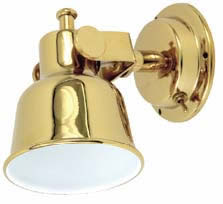I used 3M 5200 as a bedding compound for the rudder shoe and strap. This will provide a nice permanent bond that leaves me the possibility of removal in the future should I need to.
I had trouble finding bronze rods like the originals that held the rudder shoe in place. To compromise I purchased 1/4 inch carrage bolts. They did not have the length I needed to bolt the shoe in place so I filed the holes on one side of the rudder shoe so the carrage bolt would fit and I plan to cut the ends of off the bolts and peen the ends once the 5200 cures the end of this week. I left this area messy so that the peened ends will set in a gasket of 5200. THe area will be carefully cleaned once that is done.
Rudder Strap
The original rudder strap was well worn and ready to be retired. Ebb, our resident wizard generously gave me some bronze stock from which I made a new one. Thanks again Sir! This one should last another 45 years.
I used silicon bronze carraige bolts again for this application like the shoe. This time the length I needed was to be found so I bolted this in place with silicon bronze lock washers and nuts. The strap was bedded in 5200 like the shoe.












 Reply With Quote
Reply With Quote













